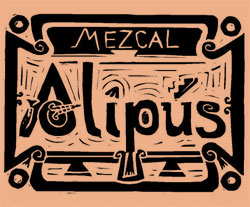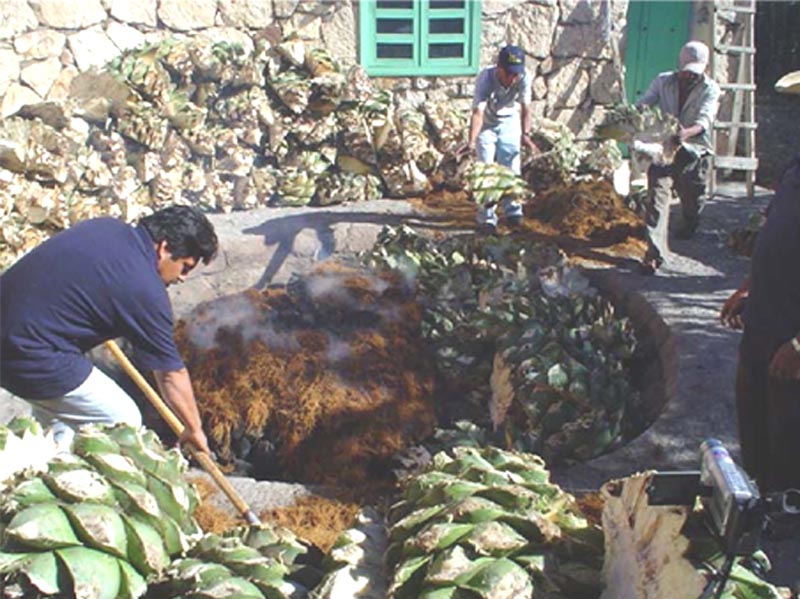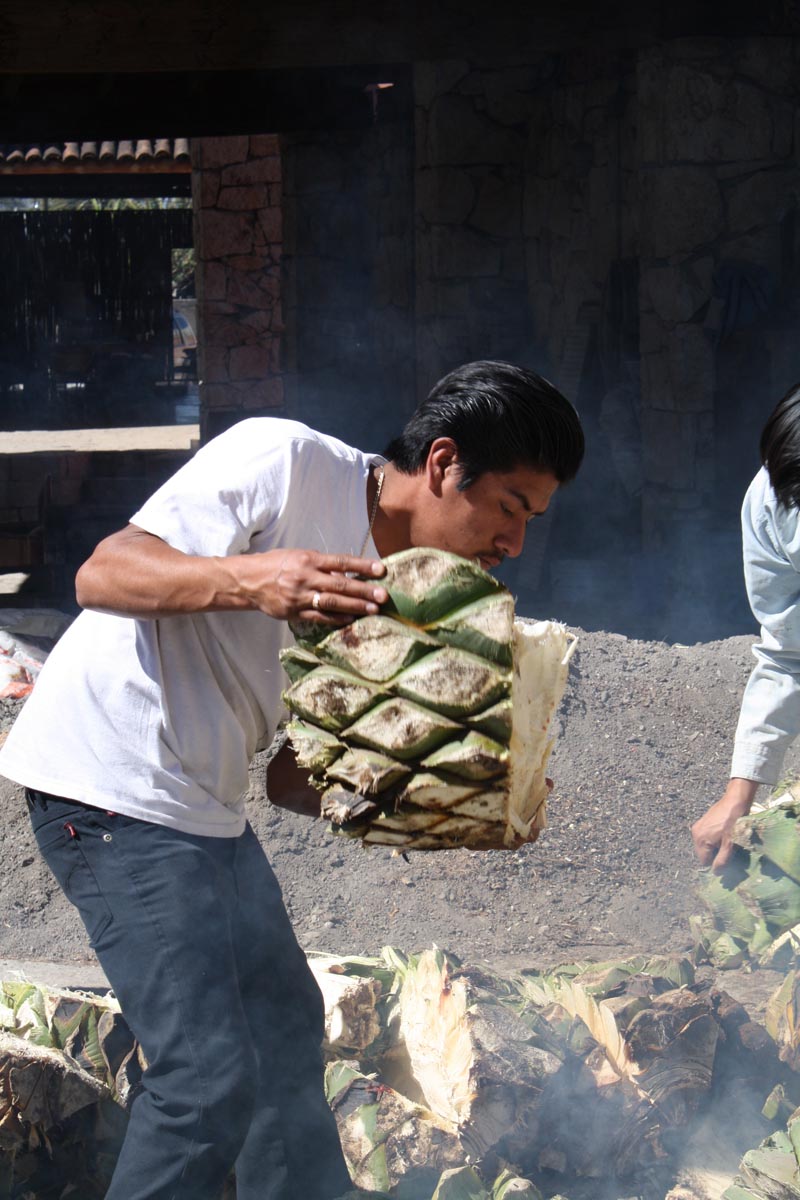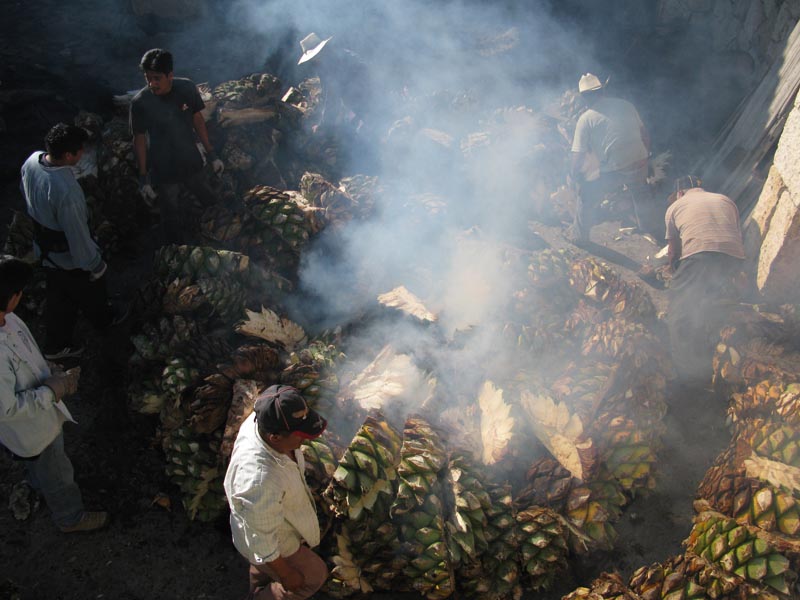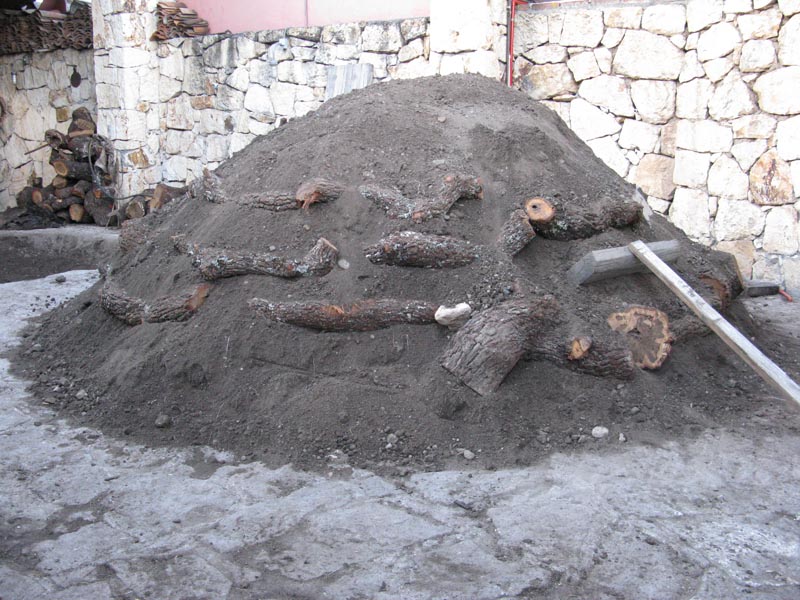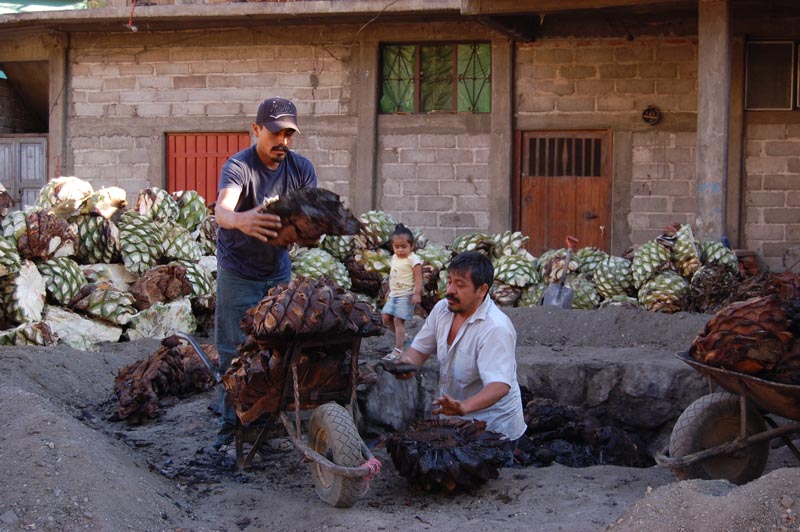Mezcal Process:
Plants store energy in the form of starch because starch resists diseases. Starch is a polymer of glucose sugar, and roasting agaves converts their starch into the simple sugars that yeast can ferment into alcohol.
Roasting is when artisanal distillers blend agaves. What you get in the bottle is always what came off the still.
The agaves are covered by a wet canvas tarp. Sand is mounded over the tarp, sealing in the heat. The agaves roast inside for 2-3 days.
Photographs by Katherine Lewis and by a tourist
